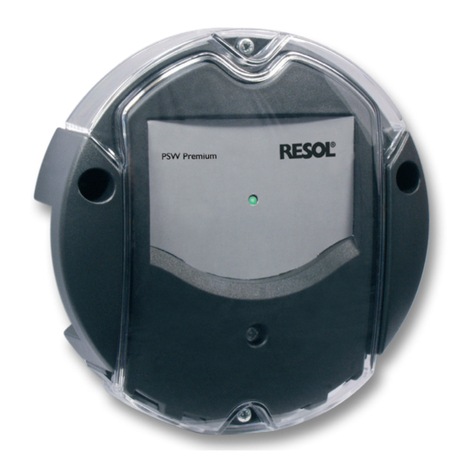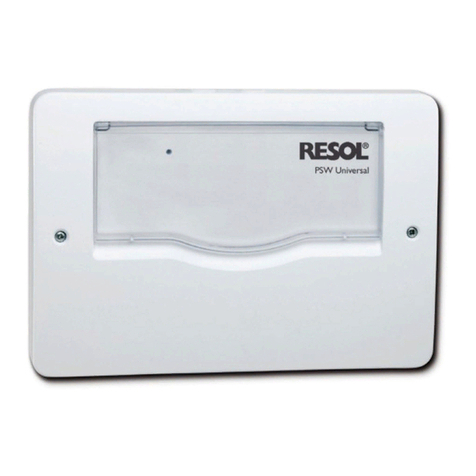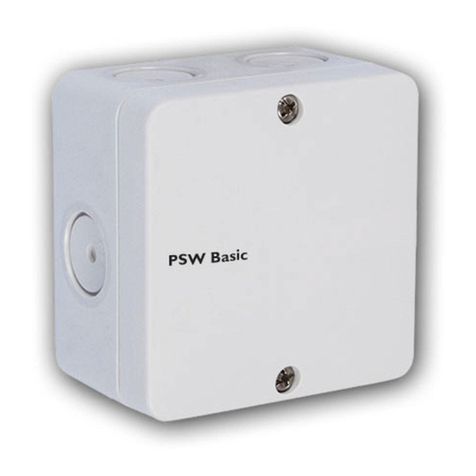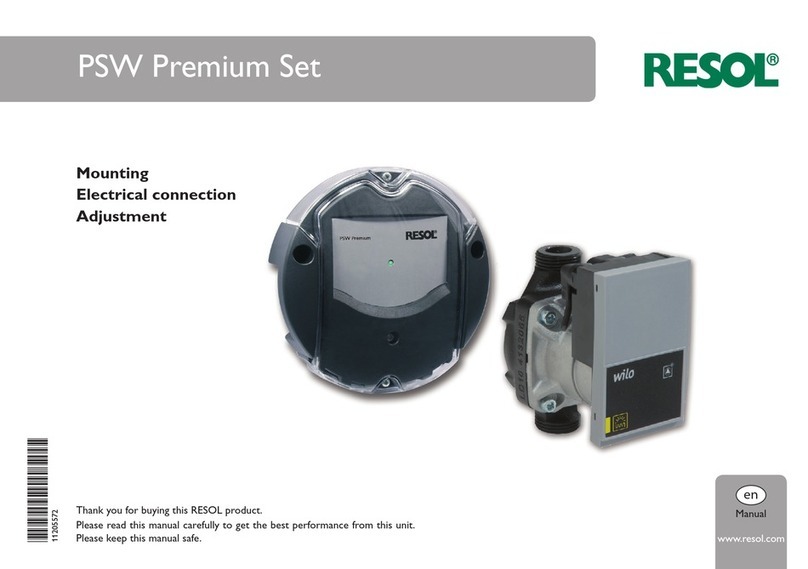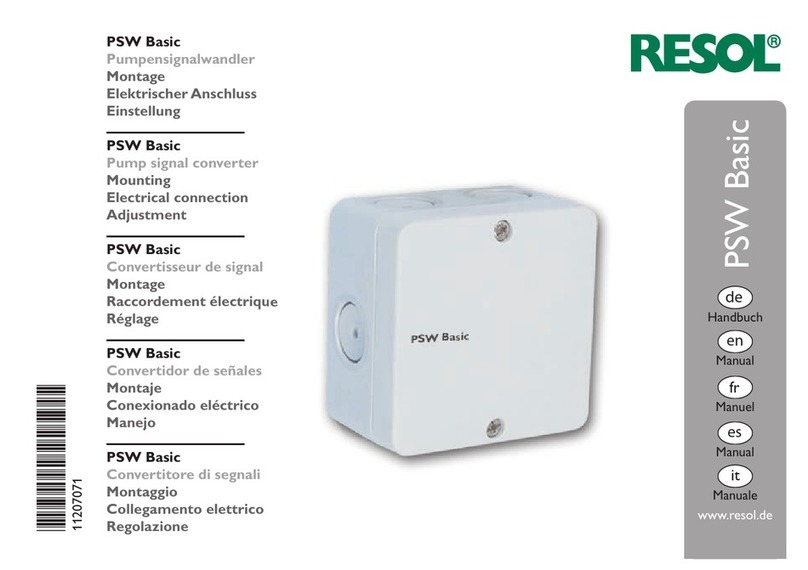
de
2
Vielen Dank für den Kauf dieses RESOL-Gerätes.
Bitte lesen Sie diese Anleitung sorgfältig durch,um die Leistungsfähigkeit dieses Ge-
rätes optimal nutzen zu können. Bitte bewahren Sie diese Anleitung sorgfältig auf.
Sicherheitshinweise
Bitte beachten Sie diese Sicherheitshinweise genau, um Gefahren und Schäden für
Menschen und Sachwerte auszuschließen.
Gefahr durch elektrischen Schlag:
• Bei Arbeiten muss das Gerät zunächst vom Netz getrennt werden.
• Das Gerät muss jederzeit vom Netz getrennt werden können.
• Das Gerät nicht in Betrieb nehmen, wenn sichtbare Beschädigungen bestehen.
Das Gerät darf nicht von Kindern oder von Personen mit reduzierten körperli-
chen, sinnlichen oder geistigen Fähigkeiten oder ohne Erfahrung und Wissen ver-
wendet werden. Sicherstellen, dass Kinder nicht mit dem Gerät spielen!
Vor Inbetriebnahme sicherstellen, dass das Gehäuse ordnungsgemäß verschlossen
ist.
Zielgruppe
Diese Anleitung richtet sich ausschließlich an autorisierte Fachkräfte.
Elektroarbeiten dürfen nur von Elektrofachkräften durchgeführt werden.
Die erstmalige Inbetriebnahme hat durch autorisierte Fachkräfte zu erfolgen.
Autorisierte Fachkräfte sind Personen, die über theoretisches Wissen und Erfah-
rungen mit Installation,Inbetriebnahme,Betrieb,Wartung etc. elektrischer/elektro-
nischer Geräte und hydraulischer Systeme sowie über Kenntnis von einschlägigen
Normen und Richtlinien verfügen.
Vorschriften
Beachten Sie bei Arbeiten die jeweiligen, gültigen Normen,Vorschriften und Richt-
linien!
Angaben zum Gerät
BestimmungsgemäßeVerwendung
Das Gerät ist für den Einsatz in thermischen Heizungs- und Solarsystemen un-
ter Berücksichtigung der in dieser Anleitung angegebenen technischen Daten be-
stimmt.
JedeVerwendung darüber hinaus gilt als bestimmungswidrig.
Zur bestimmungsgemäßen Verwendung zählt die Einhaltung der Vorgaben dieser
Anleitung.
Die bestimmungswidrige Verwendung führt zum Ausschluss jeglicher Haftungs-
ansprüche.
Hinweis:
Starke elektromagnetische Felder können die Funktion des Geräts beein-
trächtigen.
ÎSicherstellen, dass Gerät und System keinen starken elektromagneti-
schen Strahlungsquellen ausgesetzt sind.
EU-Konformitätserklärung
Das Produkt entspricht den relevanten Richtlinien und ist daher mit
der CE-Kennzeichnung versehen.Die Konformitätserklärung kann beim
Hersteller angefordert werden.
Lieferumfang
Der Lieferumfang dieses Produktes ist auf dem Verpackungsaufkleber aufgeführt.
Lagerung undTransport
Das Produkt bei einer Umgebungstemperatur von -20 …+60°C und in trockenen
Innenräumen lagern.
Das Produkt nur in der Originalverpackung transportieren.
Reinigung
Das Produkt mit einem trockenenTuch reinigen. Keine aggressiven Reinigungsmit-
tel verwenden.
© 20211214_11204815_PSW_Universal.mon5s.indd
Irrtum und technische Änderungen vorbehalten.
